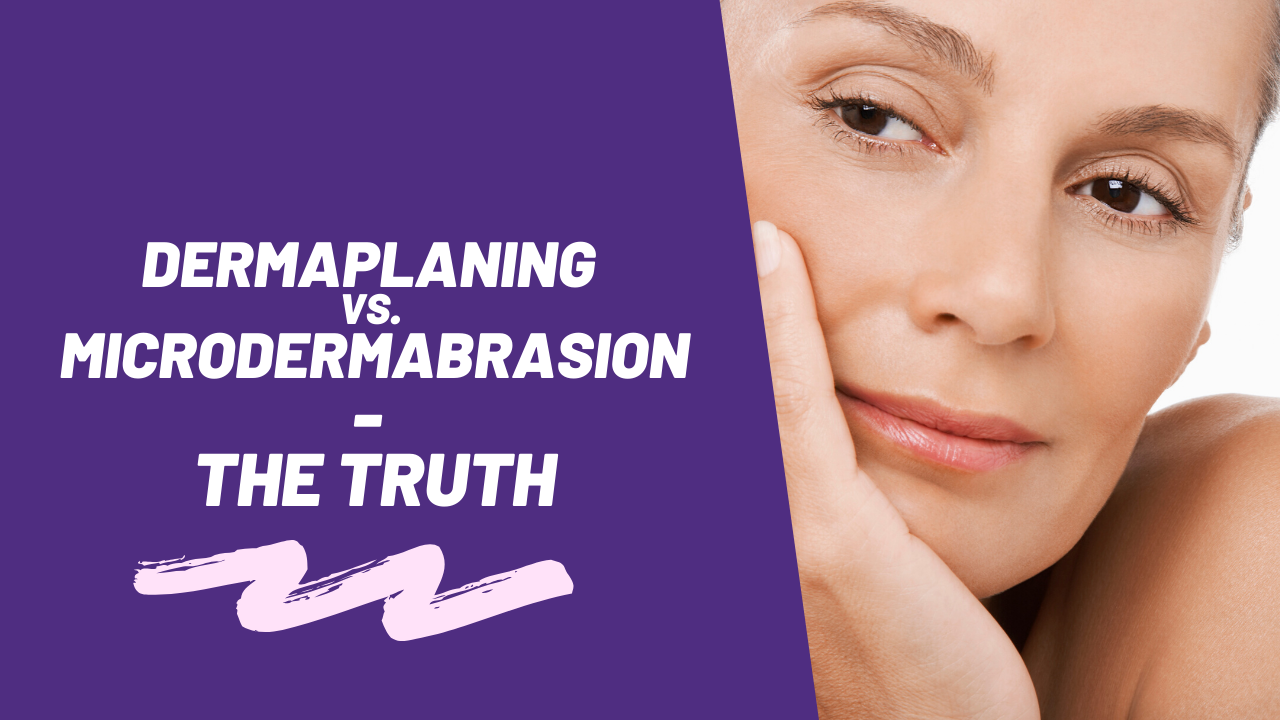Dermaplaning vs. Microdermabrasion: The Truth

A lot of people have asked us what the difference is between dermaplaning and microdermabrasion is. We agree the words do sound similar but that’s about all these facial procedures have in common. While the end result is exfoliated skin, they are completely different procedures.
DERMAPLANING
Let’s elaborate on the term dermaplane. Quite simply, it is a fancy way of saying shaving! Dermaplaning is basically just another painless way to exfoliate the top layer of your skin AND get rid of fine, vellus hair… AKA the dreaded peach fuzz! d A medical grade, straight sterile blade is used to gently stroke the face in most areas to exfoliate, or remove dead skin cells as well as vellus hair from the epidermis layer of your skin. Because of this - dermaplaning also allows for better product penetration, reduce the appearance of fine lines, even skin tone and assist in reducing milia, closed and open comedones, and minor acne breakouts associated with congested pores. You will also get an overall smoothing appearance instantly. Don’t be afraid of the medical grade straight sterile blade. Your fully trained esthetician has skillfully mastered the art of dermaplaning. The blade is stroked at an angle while your skin is held taught. Of course, there is always the possibility of a slight nick especially in the areas where the curvature of your face is greatest, such as your chin and nose area. But don't let that discourage you. The nicks are minor, much like when you nick legs while shaving.
Following the dermaplaning treatment, it’s common to have a mild peel because the results will be amazing! With peach fuzz and dead skin cells gone, the peeling solution will be able to absorb more evenly and deeply to give you even better results! We recommend the Theraderm Lactic Acid peel that will really make your skin glow.
MICRODERMABRASION
Microdermabrasion has been around for quite some time and is done in either diamond tip form, or crystal form. The effects of microdermabrasion are slightly different than dermaplaning. Microdermabrasion creates abrasion, pressure, and suction during treatment leaving you with slight erythema or redness, but a smooth, clean exfoliated canvas. Now you might be asking yourself, why would I want redness and abrasion? Well, for a few reasons. Just like dermaplaning, microdermabrasion will help correct signs of aging, skin tone and texture, and other skin issues like acne scarring, however, it is more aggressive in the way exfoliation occurs. Some prefer a more aggressive take on it rather than the gentle approach. Normally for first timers, 1 to 2 passes are done on the face in sections at a time while skin is held taut with the pen like applicator with diamond or crystal tip attached. For patients that have had this procedure before many times, more passes are ok to do so long as the skin does not become overly irritated and suction does not create a bruising type mark or a striping appearance. Also keep in mind, that microdermabrasion does not remove vellus hair from the face.
If you want to be really aggressive with your treatment - following up with a Theraderm Jessner Peel is just what the doctor ordered!
No matter which treatment you choose, always remember to follow up with a broad-spectrum protection sunscreen like Theraderm Platinum Protection Facial Sunscreen. This will help protect your results while extending the benefits of the procedures.

